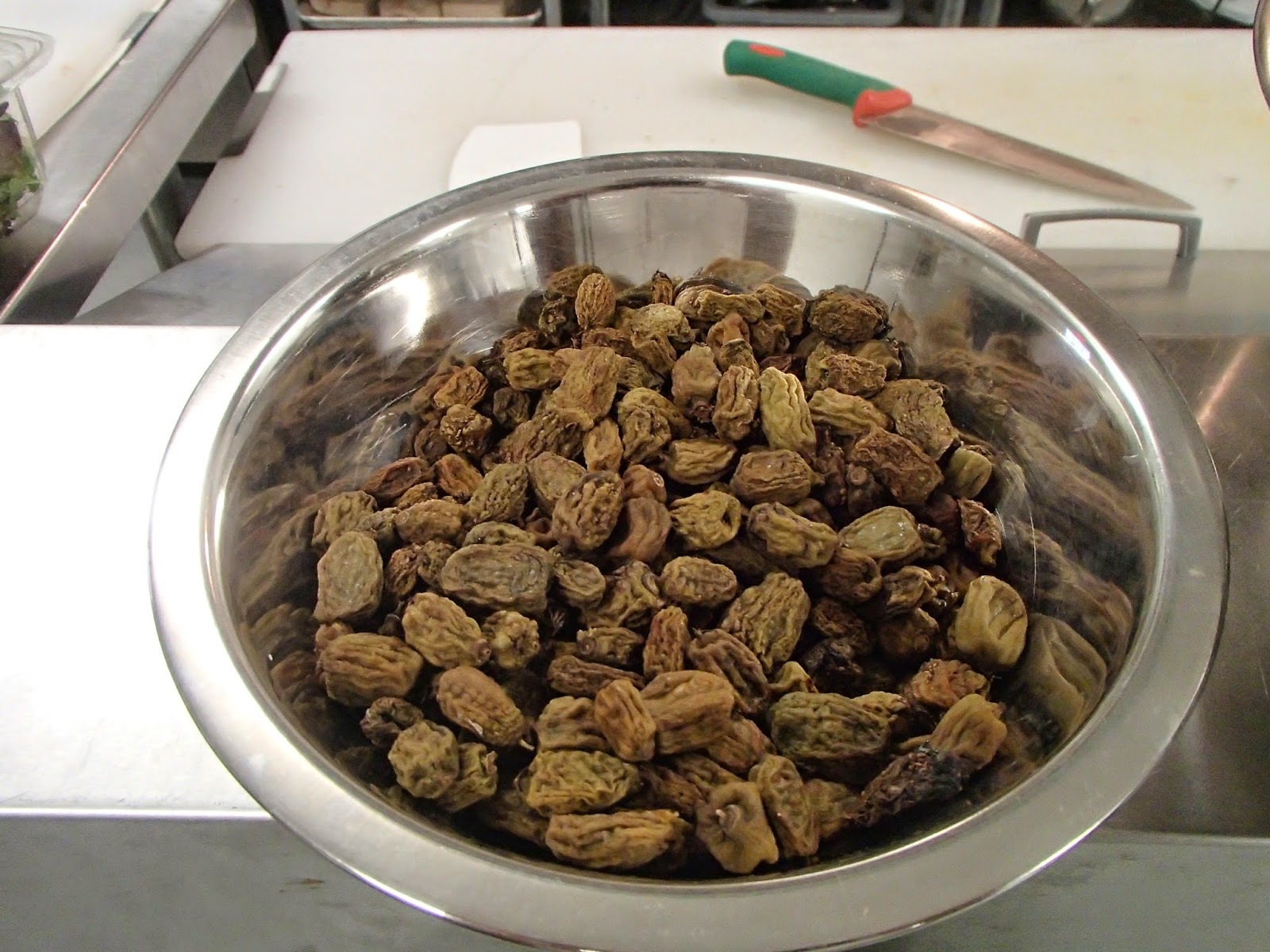It's Kiwi season in Pelham!
Our Kiwis are ready to pick and the trellised Kiwis have done very well for us. We have been calling our variety "Arctic Kiwis", however to be frank we're not exactly certain which variety we have. Our vines were planted years before our acquisition of the farm and it seems years before Kiwis were actually considered a viable crop for Niagara.
The "Kiwi" is actually a marketing name for what used to be called the Chinese Gooseberry and there are over a hundred varieties, from small to large, red to orange to green fruits.
Our type of Kiwi is small and blushes red when mature. They have a smooth skin and do not need to be peeled when eaten. We have seen similar Kiwis marketed as "Hardy Kiwis" or "Kiwi Berries".
 |
| Ripe and juicy "Arctic Kiwi" |
Whatever variety we have on hand, our attempts at pruning and trellising have worked out well and we will now have to work on a dozen rows which have become "feral". They have self-propagated and entangled themselves in wild Grape vines, wild Rose bushes and the occasional Mulberry tree.
When properly trellised and pruned, the Kiwis are easy to harvest and form what we like to call "Kiwi coves". It's a rather beautiful site when walking under the trellised vines.
 |
| Trellised Kiwis ready to be picked |
 |
| A sample of large "Arctic Kiwis" or "Kiwi berries" |
 |
| Harvesting Kiwis has proven to be one of our favourite Fall tasks |
 |
| Our first Kiwi jam of the season |
 |
| Kiwi raisins ready for baking |
On the foraging front, we have been harvesting Staghorn Sumac drupes. It is amazing to see how many people consider this a poisonous plant (confusing it with the Poison Sumac). The two plants are significantly different and cannot be mistaken. The Poison Sumac is not as common in Canada as it is in the South of the United States. It also has a whitish grey berry, nothing like the red and furry drupes of the Staghorn Sumac.
 |
| The Staghorn Sumac and its drupe |
We tend to pick our drupes in late Summer or early Fall (never after a rainfall since it tends to wash away the flavours). These we simply put in a pot, add cold water and let sit over night. The next step is to simply filter out the drupes. The result is a delicious golden red tea, ready to consume.
 |
| The simplest of recipes: steeping Sumac drupes in cold water |
Depending on one's taste, the resulting tea can be made more concentrated by waiting longer or by using smaller drupes (which provide more surface area for water to come into contacts with the small furry berries).
This plant was considered a medicinal plant by some aboriginal tribes. In fact it was sometimes dried and smoked with tobacco. Not only is the tea delicious, but it is also associated with a lot of health benefits, including a high concentration of antioxidants. Note that people highly allergic to poison ivy could be allergic to Staghorn Sumac as well.
This year, we decided to go a bit further and we've actually transformed a concentrated tea into a jelly. This jelly retains many of the properties of the Sumac tea and has a mild wood spice aftertaste.
Finally, another fruit to look out for this time of year is the Quince.
Today few people can recognize a Quince or know what to do with this odd pear-like fruit. In the area many "feral" trees can be found and the fruits are definitely worth harvesting.
Every year one of our neighbours tends to surprise us with a new find and this year he did not let us down by bringing in a bag of large and beautiful fruits (thank you John!).
 |
| Quinces ready to be turned into jelly. |
Since we've not reported on the Ward Manor for quite a while, we'll close this week with a quick update. We're now nearing the end of the landscaping phase, The "hardscape" is almost done and for the first time we can now take a full picture of the old Victorian home.
 |
| The old manor in all its splendor |
 |
| The gallery is open to the public by invitation or appointment |
No comments:
Post a Comment